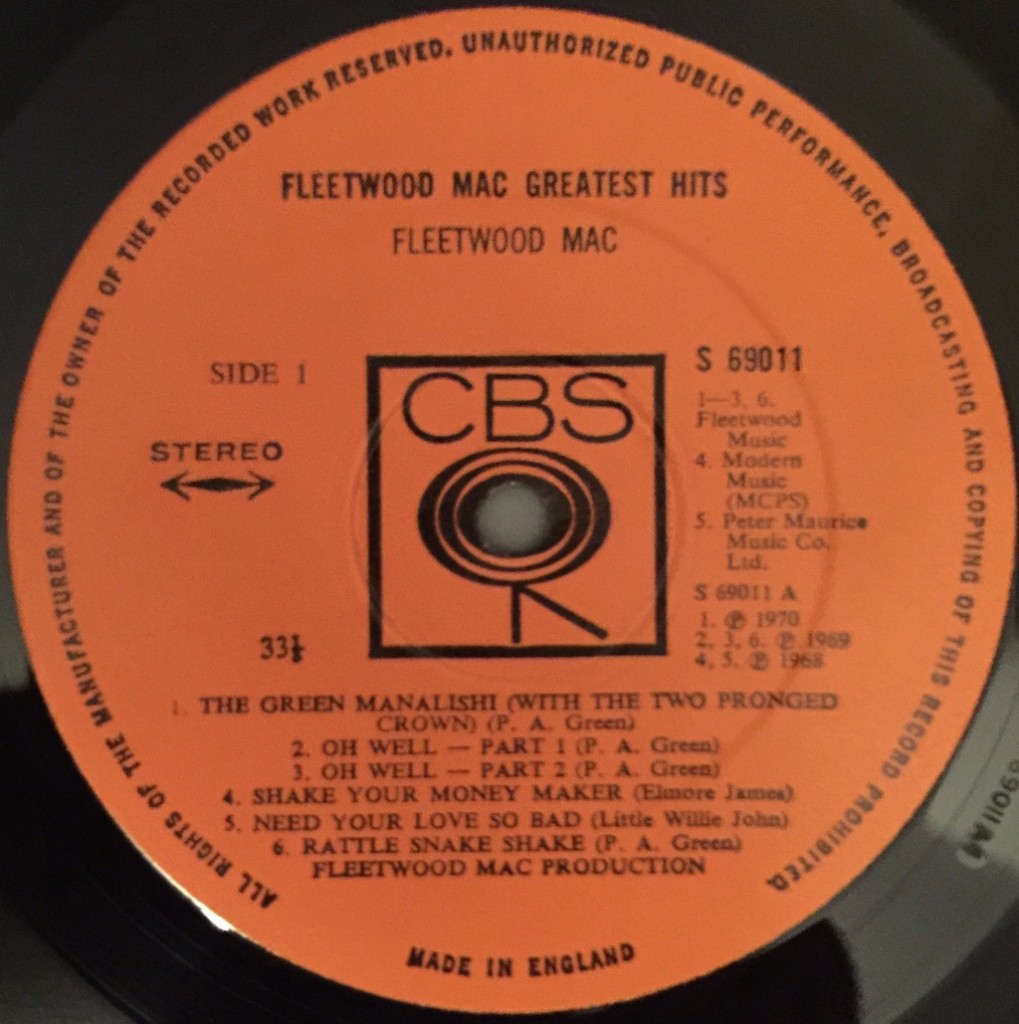

They brought with them plenty of problems, even more alcoholism and the wife-swapping/stealing started. Green left his own band – the rhythm section became the bosses, kept the branding and it was a revolving door of blues vocalists and guitarists for a few years. In the same song they could go from Grateful Dead jam band to Deep Purple frenzy while starting (and sometimes ending) the tune in Chicago or deep in the Delta. All at once his band were blues purists and part of the psychedelic rock movement. Green had a deep understanding of the blues – and developed as a songwriter by channelling that knowledge and his own dark vision. And some of the extraordinary music that appeared was a direct result of the band’s most unhinged facets. There was depression and – when it was eventually diagnosed – schizophrenia. A decade before Annie Lebowitz would photograph the bed-swapping pop-group version of Fleetwood Mac Peter Green was struggling to keep it all together. Green fought against some severe demons to bring this music into shape. Kirwan and Green traded leads and from the soulful to the raucous this was a pure distillation of blues energy. Sometimes he’d barely play guitar, he’d shake his head and a pair of maracas in time with the music.

He’d play Elmore James-styled slide guitar and brought in a range of rock’n’roll covers. This was a fascinating and fantastic three-guitar line-up with Spencer bringing a strange sense of almost vaudeville to the shows. Green pulled in the young Danny Kirwan and Jeremy Spencer.

He also became a leader in much the way that his early mentor John Mayall had been a bandleader and talent spotter. Peter Green’s Fleetwood Mac played some of the best blues covers you could hear an innate understanding of what drives those roadhouse shuffles and Green’s guitar was a crucial component. Shortly after he was leading a band with all of their names in the title: Peter Green’s Fleetwood Mac. When a young Peter Green was giving the gift of some studio time he laid down an instrumental track and decided, on a whim, to name it Fleetwood Mac. Green and McVie and Fleetwood had all been nurtured through that British Blues Boom/sound, John Mayall and Alexis Korner and the like. And that rhythm section’s name was, first off, loaned to a piece of music. The only constant in the Fleetwood Mac line-ups.
Best peter green fleetwood mac albums tv#
It was that one-hour BBC TV show from the late 1980s that taught me about Peter Green – and all of the guitarists that followed that gave me a context beyond knowing about all the pop hits and what seemed like an anomaly, that instrumental Albatross.įleetwood Mac was named after the rhythm section in fact that rhythm section (Mick Fleetwood on drums and John McVie on bass) is still there. I’ve watched that documentary close to a hundred times. As the documentary Fleetwood Mac at 21 puts it, “they are the FM in FM radio”. But I still love the FM-radio version of Fleetwood Mac. People like to focus on the early blues years now, a different band entirely. I have been obsessed with Fleetwood Mac – all versions of the band – since I was about 10 years old.


 0 kommentar(er)
0 kommentar(er)
